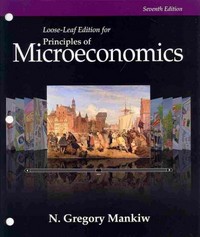Question
(Each question is 25 points) 1. Home's demand curve for wheat is Qd = 160 - 40P. Home supply curve is Qs = 40P. Foreign,
(Each question is 25 points) 1. Home's demand curve for wheat is Qd = 160 - 40P. Home supply curve is Qs = 40P. Foreign, which has a demand curve Qd* = 150 - 20P*. Foreign supply curve is Qs* = 30P*. a. Calculate the equilibrium price and quantity for Home and Foreign in the absence of trade (autarky). b. Based on this information, who imports, who exports? Why? c. Determine the export supply and import demand based on your answer on part a. d. What is the world price in the absence of protection? What is the quantity of trade? Graph the international equilibrium using 3-graph figure. e. Assume that Importer imposes a specific tariff of $0.50 on wheat imports. Determine and graph the effects of the tariff on the following: 1) the price of wheat in importing country and exporting country; 2) the quantity of wheat supplied and demanded at the importer; 3) the volume of trade. f. Determine the effect of the tariff on the welfare of each of the following groups: 1) Import-competing producers (Change in PS); 2) consumers in the importing country (Change in CS); 3) Importer government (Government Tariff Revenue).
2. Consider the following two Ricardian economies. Ypsilanti Ann Arbor Food Clothing Food Clothing Labor Input Requirements alf = 5 alc = 4 alf* = 4 alc* = 6 Total labor available L = 200 L* = 240 a. Draw the production possibilities for each city (clothing on x-axis). What is the pre-trade relative price of clothing in each city? b. If each country spends half of their income on each good in autarky, show the consumption of each good on the PPFs of Ypsilanti and Ann Arbor economies. (ECON580: If the utility in each economy is determined by the following Cobb-Douglas function U(C, F) = C0.5F0.5 find the autarky production/consumption point using the Lagrangian method) c. Which city has absolute advantage and comparative advantage in each good? Explain. d. If both cities start to trade, who produces what? What is the upper and lower bound for relative price of clothing (terms of trade)? e. Assume that the Relative Price of clothing in the market is 1.00. Find the consumption point assuming that they will spend half of their income on each good. Show that both cities will gain from trade assuming that they will spend half of their income on each good. (ECON580: Use Cobb-Douglas function U(C, F) = C0.5F0.5 find the consumption point using the Lagrangian method) f. Show that both countries gain from trade by comparing the autarky and trade consumption bundles of Food and clothing,
3. An economy produces two goods: Apples (A) and Oranges (O). The production possibilities frontier of the economy is defined as 10,000 = A2 + 2O2 (Use Apples on x-axis and Oranges on y-axis). Based on this, the slope of the PPF is the Marginal Rate of Transformation (MRT) equal to (A/2O). The community indifference curve (CIC) on the other hand is defined as Utility = U(A,O) = A0.5O0.5. The slope of the CIC is equal to MRS = (O/A). a. Calculate the autarky point where the economy produces and consumes. Illustrate this point on a PPF. b. Calculate the autarky domestic relative price of apples in terms of oranges? c. Now assume that the economy opens up to trade and the relative price of apples in terms of oranges (Pa/Po) is 0.50. What good does the economy export? d. Calculate the new production point. Illustrate this point on your PPF. e. Calculate the consumption point now. How much does the economy consumes apples and how much oranges? Illustrate this point on your graph. f. Calculate the exports and imports.
4. Answer the following questions: a. What are the fundamental assumptions of Ricardian Model? Specifically related to: i. Number of inputs, ii. Constant Input Proportions, shape of PPF, iii. Number of countries and goods, iv. Definition of unit labor requirement. b. Trade Theory suggests that large economies might benefit from imposing a tariff while small economies are bound to lose from tariffs. Explain using relevant graphs the basis for this theory. Show how large countries can potentially benefit from tariffs while small counties lose from protection. c. What are the fundamental differences between quotas and tariffs? Explain them in detail. Use diagrams as needed! d. What are the characteristics of Indifference Curves? Explain them.
Step by Step Solution
There are 3 Steps involved in it
Step: 1

Get Instant Access to Expert-Tailored Solutions
See step-by-step solutions with expert insights and AI powered tools for academic success
Step: 2

Step: 3

Ace Your Homework with AI
Get the answers you need in no time with our AI-driven, step-by-step assistance
Get Started


